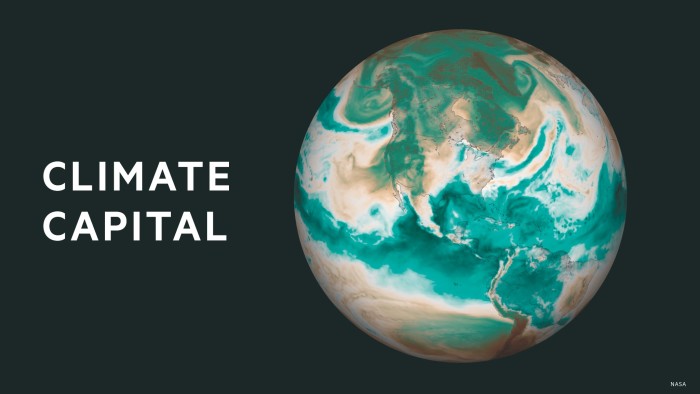What we get wrong when we talk about global warming


Roula Khalaf, Editor of the FT, selects her favourite stories in this weekly newsletter.
Three and a half years ago I had a New Year’s Eve that I will never forget. Not because of a spectacular house party or dazzling fireworks display, but because I got stranded in a tiny Australian beach town when the only road out became cut off by a rapidly approaching bushfire. Lunch was coated in a fine layer of ash, the sky was black at 3pm but thanks to a bit of luck, and the bravery of the New South Wales fire fighting corps, we escaped unscathed the next day.
I bring this up for two reasons. First, because the record-setting Australian bushfire season of 2019-20 was facilitated by a clear long-term trend of increased hot and dry weather in the region brought about by global warming. And second because if you were to describe the ideal human habitat, it would not feature bushfires.
Nor would it feature extended periods of temperatures at or near 40C (104F). Yet these have become commonplace across heavily populated regions of Asia, southern Europe and the southern US in recent years.
Would humanity settle on a new planet where going outdoors during daylight was potentially lethal, leading to time spent scurrying between buildings and vehicles in search of shelter from the environment? Surely not. Yet somehow Phoenix, Arizona, where maximum temperatures have now exceeded 40C for 26 successive days, is America’s fastest growing big city.
I fear that one of the reasons for such irrational behaviour is that most discussions about climate change continue to emphasise the risk of much worse things coming down the tracks. This is understandable, but a permanent focus on the future can blind us to what is already happening. We instead insist that life simply goes on, that we’re adapting.
The thing is, for a growing number of people, life does not go on at all. It’s all very well saying that Arizona has always been very hot, but there are degrees of very hot. Between 1970 and 1990, an average of 16 people per year died from “exposure to excessive natural heat”. Between 1990 and 2015, the average rose to 38. In 2020 it was 210, and 2022 came in at 257.
These figures are not estimates of excess mortality coinciding with extreme heat, where different methodologies can produce different figures. They are specific individuals whose death was judged by a medical examiner to have been directly caused by extreme heat. Some are people who suffered severe burns when their skin came into contact with pavements superheated to as much as 82C (180F). This is not a forecast for 50 years time, it’s happening today.
As climate anxiety grows, the risk that humanity continues to be the frog in a slowly boiling pot of water is only exacerbated by the fact that we continue to emphasise abstract statistics instead of things that people can really see and feel.
I understand the focus on the 2C limit, but it a) sounds small, b) refers to some date in the future, c) lacks any connection to human experience and d) does a pretty bad job of describing what is happening with temperatures.
In much the same way that focusing on the average US lifespan of 76 years encourages one to think about older people and obscures the tens of thousands of young adults who died to create that tragic statistic, focusing on average temperature growth obscures the extremes that drive loss of life and total transformation of living.

As of mid 2023, global surface temperatures have already risen by about 1.25C of the 2C budget, according to the latest data from NASA and the US National Oceanic and Atmospheric Administration, but these numbers float in our heads unanchored to the real world. What matters is that when you push up an average, you push out the extremes. Today, Phoenix experiences four times as many days of searing heat as in the 1950s, Paris eight times as many, and London 10 times. Each one of those inhospitable days has already come at a steep price, directly causing dozens of deaths, and forcing thousands of others to opt for coping instead of living.
Global warming is upon us. For governments and publics alike, our best chance of averting an even worse tomorrow is to recognise and respond to the damage already done today.
john.burn-murdoch@ft.com, @jburnmurdoch
Climate Capital

Where climate change meets business, markets and politics. Explore the FT’s coverage here.
Are you curious about the FT’s environmental sustainability commitments? Find out more about our science-based targets here








Comments